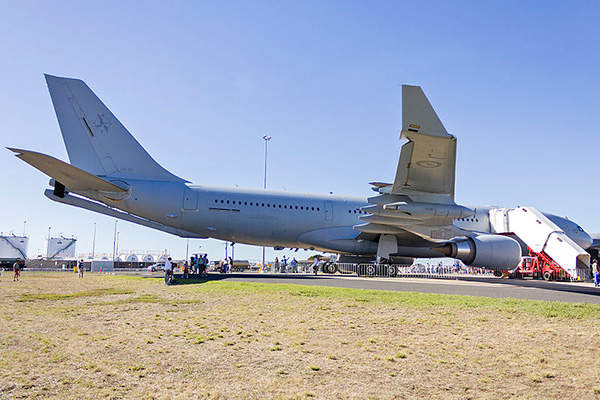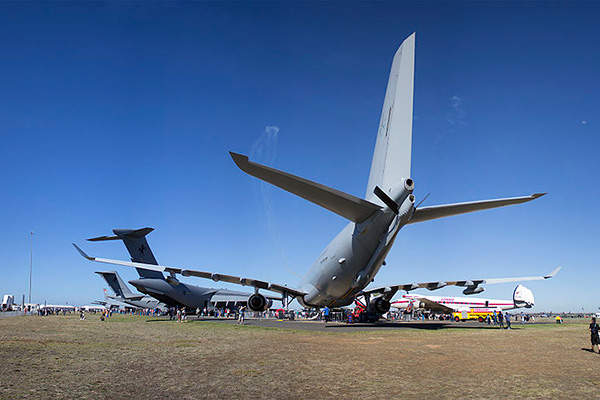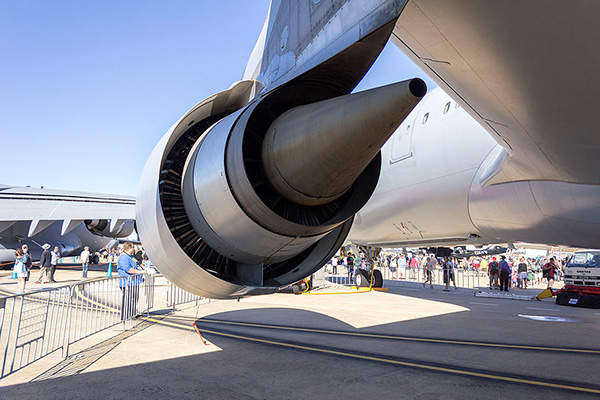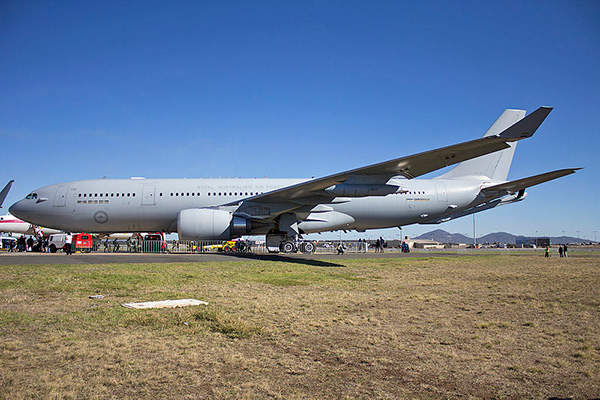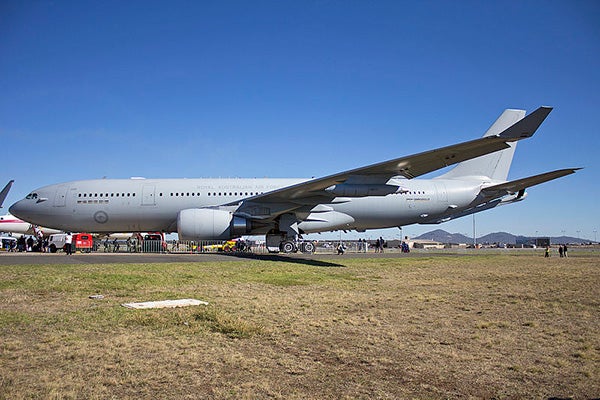
The KC-30A Multi Role Tanker Transport (MRTT) is designed and manufactured by Airbus Military to provide aerial refuelling and strategic tanker/transport services for the Royal Australian Air Force (RAAF).
The KC-30A aircraft is operated by No. 33 Squadron from RAAF Base Amberley to provide air-to-air refuelling for air combat to enhance flight time and range. The aircraft are being modernised to achieve final operational capability and to refuel E-7A Wedgetail Airborne early warning and control aircraft, C-17A Globemaster and other KC-30As.
The aircraft will also be able to refuel the RAAF’s P-8A Poseidon surveillance aircraft and the F-35A Joint Strike Fighter.
Development, orders and deliveries
The KC-30A is a military variant of the Airbus A330 passenger jet. Five A330 aircraft were converted into the RAAF’s configuration by Qantas Defence Services in Brisbane, Queensland. Flight Refuelling (FRL) provided all-electric refuelling under-wing pods and Cobham supplied hose-and-drogue system for the KC-30A. Liquip International Aviation Division delivered four hydrant dispensers for airborne refuelling configuration.
BAe 146 C Mk3 is a military transport aircraft designed and developed by BAE Systems for the UK Royal Air Force.
The first KC-30A aircraft was accepted by the RAAF in June 2011 and the maiden flight was performed in September 2011. The RAAF accepted the second KC-30A in September 2011 and the third in November 2011. The fourth aircraft was formally delivered in January 2012. The fifth KC-30A was accepted by the RAAF in November 2012.
The RAAF demonstrated refuelling capability of two KC-30A aircraft with seven F/A-18 A/B Classic Hornets during the Exercise Cope North Guam 2013. The aircraft achieved initial operational capability (IOC) in February 2013.
KC-30A design, features and refuelling capabilities
The flexible KC-30A design incorporates a variety of military communications and navigation suites, and a comprehensive defensive aids suite.
The aircraft has a height of 17.4m, a length of 59m and a wingspan of 60.3m, while the maximum take-off weight and the maximum landing weight are 233t and 180t respectively. It can provide air lift for up to 270 passengers in two classes. The under-floor freight and fuel capacities are 36,000kg and 111t respectively.
The KC-30A’s cockpit is equipped with 2D and 3D screens, and accommodates a pilot, co-pilot, an air refuelling officer, one mission coordinator, and up to eight crew attendants. The air refuelling officer controls two air-to-air refuelling systems.
The tail section of the aircraft is mounted with the aerial refuelling boom system (ARBS), which is around 12m long when retracted and up to 18m when extended. The flow rate of the ARBS is 8,040lb/min.
The ARBS consists of a fly-by-wire boom refuel system, remote air refuelling operation (RARO) console and a boom enhanced visual system (BEVS). The RARO console is used to control boom, pods, video systems, mission planning system, communications systems and fuel offload quantities.
The KC-30A aircraft is fitted with a pair of all-electric refuelling under-wing pods and a 90ft hose-and-drogue system to refuel probe-equipped aircraft at a flow rate of 2,810lb/min. It also features a universal aerial refuelling receptacle slipway installation (UARRSI) with a flow rate of 8,040lb/min.
The forward cargo hold can accommodate up to 14 LD3 containers or four 463L military pallets, while the aft cargo hold can facilitate 12 LD3 containers or four 463L military pallets. The bulk cargo hold can carry loose articles and one LD3 FAK.
Avionics aboard KC-30A aircraft
The KC-30A MRTT aircraft is equipped with an advanced mission planning system to provide mission support for on-ground and in-flight mode of operations as well as for air-to-air refuelling (AAR) missions. A Link 16 real-time data-link is installed to exchange tactical information and imagery in real time.
The aircraft also incorporates Thales’ advanced military avionics systems, including an upgraded radio management panel and a modernised flight management system, radio systems, crypto, a multipurpose information distribution system, a situational awareness tool and CAE’s simulator devices.
The KC-30A is also fitted with Northrop Grumman’s Directional Infrared Countermeasures (DIRCM) missile warning system and electronic warfare self-protection (EWSP) systems for protection from surface-to-air missiles.
KC-30A propulsion and performance
The KC-30A MRTT aircraft is propelled by two axial-flow, two-shaft CF6-80E1A3 turbofan engines, developed by General Electric. Each engine develops a thrust of 68,530lb. The propulsion system also consists of R88DT high-pressure turbine rotor and a full authority digital engine control (FADEC) system.
The aircraft can reach a cruise speed of 860km/h, and has a range of 14,800km and service ceiling of 41,000ft.
The Global Military Aircraft Market 2011-2021
This project forms part of our recent analysis and forecasts of the global military aircraft market available from our business information platform Strategic Defence Intelligence. For more information click here or contact us: EMEA: +44 20 7936 6783; Americas: +1 415 439 4914; Asia Pacific: +61 2 9947 9709 or via email.

